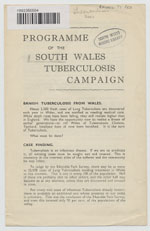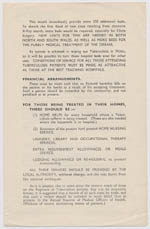Housing





Industrialization cast a shadow over the health of the community. In south Wales, many communities were established, or expanded around existing sites, to service the coal industry. Not all these communities were in close proximity to the collieries, however, as more remote rural areas also saw an increase in population and subsequent housing developments.
The style of housing in the south Wales coalfield area differed according to the local geography. In the eastern and central coalfield, terraced housing predominated because of the steep valley-sides in which it was built. In the western coalfield area, more semi-detached housing was erected. Many workmen rented their houses, and this encouraged landlords to construct and buy more housing. Overcrowding was a problem when new collieries opened and workmen flooded into the district, and families often took in lodgers to supplement their income.
The 1875 Public Health Act had established a basic sanitary code for the entire country, including the control of building design and standards through sanitary authority bye-laws. This effected housing built during the peak years of coalmining in south Wales, in the late nineteenth and early twentieth-centuries, as standards improved. Housing was built by private investors, colliery companies, coal-owners, philanthropic organisations (e.g. Welsh Garden Cities Co.), building clubs (potential owner-occupiers who became collective shareholders in a building development), and local authorities. The involvement of local authorities increased when they benefited from Government financial assistance in 1919 with the Addison Acts (Housing and Town Planning Act, and Housing (Additional Powers) Act).
The 1923 Rent and Mortgage Interest (Restrictions) Act which allowed rent controls to lapse on a change of tenancy adversely affected the poorest tenants in slum accommodation as they could not afford to move to better properties. The 1930 Housing Act (or ‘Greenwood’ Act) gave local authorities the power to demolish properties that were unfit for human habitation, or posed a danger to health. They also had an obligation to subsequently re-house the tenants, which opened the way to the provision of council housing.
Further Reading
Harris, Bernard, The Origins of the British Welfare State: Social Welfare in England and
Wales, 1800-1945, (Basingstoke: Palgrave Macmillan, 2004)
Jones, Philip N., Colliery Settlement in the South Wales Coalfield 1850 to
1926, (University of Hull Publications, Occasional Papers in Geography No. 14)
Useful Links
St. Fagans National History Museum
http://www.museumwales.ac.uk/en/stfagans
The 24 Hour Museum http://www.24hourmuseum.org.uk
|
|
Avery weighing-scales

The Ton Co-operative Society purchased a set of Avery personal weighing-scales in 1929 for their shop in Treherbert. The Avery publicity photograph shown here is in the Ton Co-operative Society’s papers held in the South Wales Coalfield Collection, reference MNA/COP/7. This range of weighing- scales was made in the late 1920s to early 1930s. It was operated by inserting a penny coin, and was used indoors at premises where takings were likely to be small. The Avery company’s information sheet for the product emphasised the health benefits of such an item, stating that ‘The modern chemist’s shop is not complete without an automatic weighing machine’, and ‘The clean hygienic appearance makes it an added attraction to any establishment’.
Photograph reproduced by kind permission of Avery Weigh-Tronix.
Useful Links
Avery Historical Museum http://www.averyweigh-tronix.com
|
|












